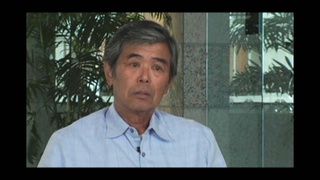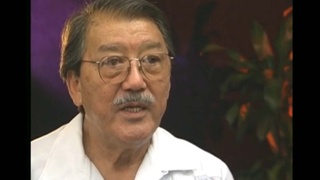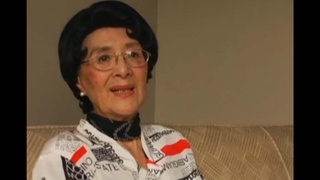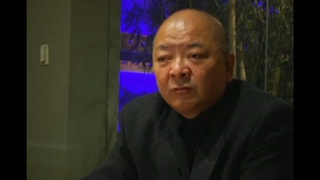Interviews
Getting along with "Jichan" and "Bachan"
This thing of skipping a generation, I think as Sanseis we began to look more not at what the Niseis did but what the Isseis did. We wanted to communicate with jichan and bachan and found out that there was a very rich culture there where maybe the Isseis really didn’t transfer that or the Niseis didn’t pick up on it. Maybe they were too close, and they hated the parents because they were so strict. Any number of things where, as Sansei kids, maybe we were more spoiled by grandparents. So we have a closer relationship, and we want to know more. It was also this thing of finding more identity, who we are. This maybe be stereotype, but I think Asians do have a certain aesthetic sense. I think it comes from growing up in house where art things are around—calligraphy, pottery, baskets and bamboo things are displayed and used every day. They have function and beauty. It’s part of growing up, maybe.
Date: December 10, 2004
Location: California, US
Interviewer: Art Hansen, Sojin Kim
Contributed by: Watase Media Arts Center, Japanese American National Museum
Explore More Videos

Understanding Sansei taiko (Japanese)
(b.1943) Shin-issei grand master of taiko; founded San Francisco Taiko Dojo in 1968.

Soukou Bayashi: Dedicated to the Issei (Japanese)
(b.1943) Shin-issei grand master of taiko; founded San Francisco Taiko Dojo in 1968.

The performing arts not for Nisei
Senshin Buddhist Temple minister and co-founder of Kinnara Taiko.

Sense of lineage between Sansei and Issei through Taiko
Co-founder and creative director of San Jose Taiko



Japanese language is the important aspect to keep identity (Spanish)
Sansei Argentinean


Need generational change in Japanese community (Spanish)
(1925-2014) La Plata Hochi, Journalist


Yoshitaro Amano, Forced to Return to Japan by Prisoner of War Exchange Ship (Japanese)
(b. 1929) President of Amano Museum

Integrating As First-Generation Japanese-Peruvian (Japanese)
(b. 1962) Japanese restaurant owner and chef in Peru

Peru Representative vs. Japan Representative (Japanese)
(b. 1962) Japanese restaurant owner and chef in Peru

Thoughts on Japan (Japanese)
(b. 1962) Japanese restaurant owner and chef in Peru

Inspirations for Living Abroad (Japanese)
(b. 1962) Japanese restaurant owner and chef in Peru
